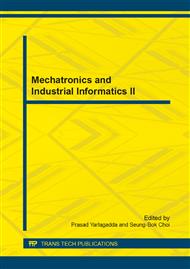p.333
p.337
p.342
p.346
p.350
p.355
p.361
p.365
p.370
Image Quality Assessment Based on Region of Interest
Abstract:
In this paper a new No-Reference (NR) image quality assessment (IQA) method based on the point wise statistics of local normalized luminance signals using region of interest (ROI) processing is proposed. This algorithm firstly extracts the ROI which is relative to human subjectivity by using the image gradient and phase congruency, and then extracts the image quality feature in spatial domain. Particularly, most of the present IQA methods mainly focus on predicting the image quality with respect to human perception, yet, in some other image domains, the final receiver of a digital image may not a human. Thus, we propose a method which can assess the image quality relative to edge detection algorithm. In addition, experimental results on LIVE database are provided to justify the superior compared to the significant image quality metrics.
Info:
Periodical:
Pages:
350-354
Citation:
Online since:
July 2014
Authors:
Keywords:
Price:
Сopyright:
© 2014 Trans Tech Publications Ltd. All Rights Reserved
Share:
Citation:


